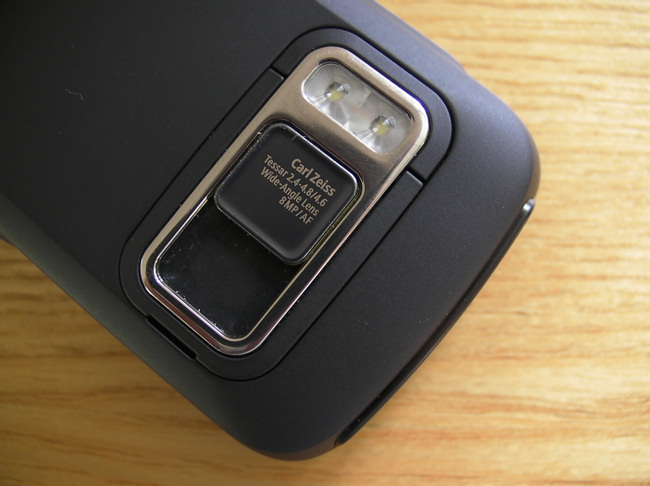It should be borne in mind that there are a lot of things that Nokia has got right in terms of their smartphone hardware, from the aforementioned memory increases to better screen technology to newer OS (Symbian^3) to USB on the Go and Pentaband connectivity. However, all the positives are not going to stop me going on a little bit of a rant. Well, five rants, in fact....
1. EDoF Cameras
Also known as 'full focus' cameras. Please let me set the record straight here - I do appreciate the precise technology required to make an EDoF lens and custom electronics, it's no small feat. And I've been on the leading edge of journalists who have covered Nokia's use of EDoF in its less 'professional' smartphones - taking a good photo with EDoF in good light is almost foolproof - which is doubtless why Nokia is championing the technology. In the C6-01, it's a great choice of technology - the average buyer wouldn't know how to take a decent auto-focus photo anyway and would likely have no use for 'macro' focussing. For these users, EDoF makes perfect sense.
For the C7, things get less certain. For starters, reviewers of this still-fairly-expensive smartphone are unlikely to full grasp the EDoF nature of the hardware and will simply complain that it's a "cheap, fixed focus affair". Then, C7 users will start experimenting with trying to scan 2D barcodes and logos and other 2010 augmented reality odds and ends, and will sometimes end up with a blurry mess. It's not EDoF's fault, it's simply that some C7 owners really needed one of Nokia's traditional auto-focus units.
Nokia's rationale is that the C7 is too slim for an auto-focus camera, but I'm not buying this. Look at the iPhone 3GS and 4. Look at countless other Android slab phones, nearly all of which are as thin as the C7 and with a full auto-focus unit.
Having said this, many C7 owners, as with the C6-01, will enjoy photos that come out surprisingly well because there's no reliance on user error to mess up the focussing. So the jury's out for this device.
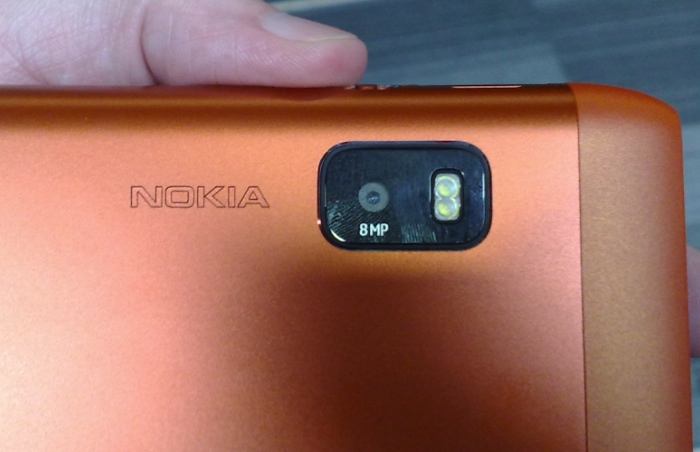
BUT. Most analysts seem to agree with me that using the same 8mp EDoF camera in the latest err... delayed.... err... imminent E7 flagship (shown above) is utterly crazy. Nokia say that they couldn't fit in an auto-focus camera and still keep with the thickness down (what with the full width qwerty keyboard) and I accept this excuse. But this doesn't make the design right. With the battery also underspecified (1200mAh) for similar cosmetic reasons, what Nokia should have done is make the E7 another couple of millimetres thicker, with proper auto-focus camera and 1500 (or even 1800) mAh battery. We're talking a flagship device here, after all, it needs to ride at the top end of the market.
You see, the average E7 buyer (of which I'm fairly typical) is going to be tech-savvy and will want to do more advanced photographic things - such as snapping a document page, a logo, a bar code, a product detail, and so on. He or she will want more control over focussing, for crisper detail where it's needed.
The E7's design is cast in iron, of course, but we can look to the future. 75% of Nokia's Symbian^3 phones use the small EDoF unit - I'd like to see at least half of their 2011 designs appear with a proper focussing camera, to give variety and options to their range. Specifically, I'd like to see an E7 successor with (as mentioned above) proper camera and much bigger battery - now that might be a real Communicator successor. I'd like to see an E72 successor with a wider, 3" touchscreen and dual LED flash.
But the bottom line has to be that EDoF should not be rolled out as the 'standard' Nokia camera technology - it's ultimately too limiting, and too easily misunderstood by reviewers - which then has a big knock on effect in terms of sales.
2. Speakers
Speaking to the owner of a phone shop recently, I was told that they'd had several people buy the Nokia N8 and then return it a few days later because the speaker was absolute rubbish and they could never hear when someone was calling. Mystified, I took out my N8 and played a tune rather loudly for all to hear. "Ah, but when the phone is on the sofa, or in a case, the speaker aperture is blocked and the sound can't get out!" Good point. This was a slight concern to me, but then I don't get a lot of voice calls.
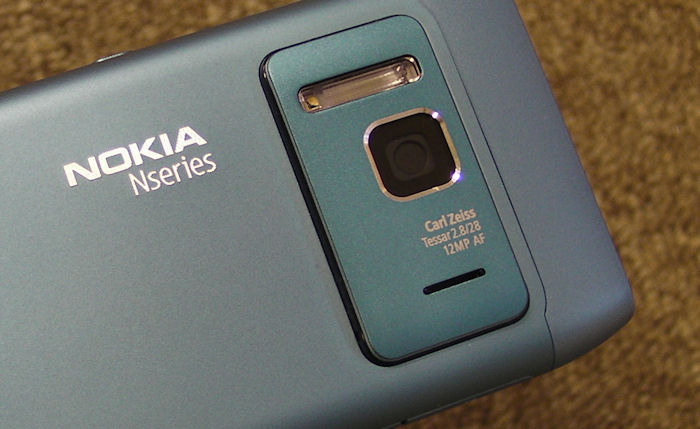
Putting the loudspeaker on the back face of the device, as in the N8 (and C7 and C6-01 to some degree) means that you have to be careful where you put the phone down and careful how you case it up. Which is annoying for many people - getting a phone to ring properly is a pretty basic attribute. The 5800 and X6 had massive, boomingly loud speakers, all side-mounted, the N95/N96/N86/N97 all had (progressively) quieter but still side mounted units, so it's a mystery why Nokia's suddenly decided to change the way it places them.
Certainly having people return an incredibly highly specified camera and multimedia-centric smartphone because.... the speaker aperture's in the wrong place seems to be completely and utterly bonkers.
For future designs, Nokia, we don't care if there's an 'unsightly' speaker grille on the side or top of the device. We simply want to hear the phone's output properly and not muffled by a factor of ten because we're "placing it wrong".
3. Fixed batteries
One attribute that both the N8 and E7 share is a fixed battery, i.e. one that's mounted internally and which users aren't expected to ever access*. The concept behind this is that the body of the phone can be made thinner, relative to the overall form factor, because a unibody construction can be employed, with no strength-reducing battery door/catches needed. Again it's a perfectly reasonable design decision but again I'm tempted to say it's not actually the right decision.
* Yes, you can obtain a T4 screwdriver and carefully open up the end, perhaps to replace a battery which has fallen to less than stellar charge levels, but it's not trivial. Even an expert will take a good minute or two to effect the change and I doubt Nokia has designed the battery holder and end cap to allow for regular changes. Best avoided.
Against a background of high profile iPhone (and wannabe) designs, all of which also have sealed batteries, one of the star features of Nokia phones was always that, if the battery did die on you, you could just slot in a new, fully charged one. Thus, whether it's an N95 or E71 or N97 - or a new C6-01 or C7 (shown below) - you have this ultimate flexibility in terms of power. Personally, I've accrued spare batteries for almost every Nokia I've ever owned (charged using this, mainly), ready for emergency use... a little extreme, but you get my point.
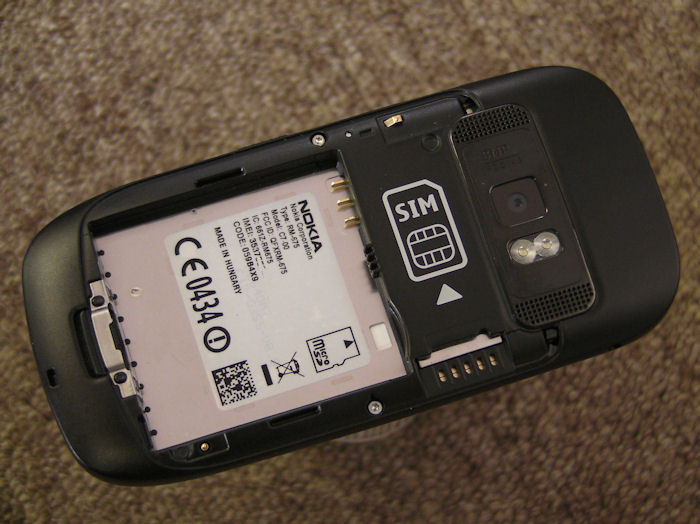
Now, the battery in the N8 does seem to last a full day's use with ease and the unibody construction does lend this premium Nseries device a quality air, but the E7's another matter. We're talking about a 4" OLED screen this time, plus 'business' level of availability (i.e. absolutely cannot die on you before the end of the day - your job may depend on it) - all from a single fixed, internal 1200mAh cell. I'm a little worried...
For their 2011 designs, Nokia should resist the temptation to go 'sealed' again. Nokia makes some spectacularly good batteries (e.g. BP-4L), so why not design more of their models around these? When the iPhone 4 owner next to you on the train on the way home runs out of power at the same time as you, you'll then still be able to calmly reach into your pocket for your charged spare - and then be good to go for another 24 hours or more.
Sealed/internal/'embedded' batteries should be reserved for niche phones where style and strength is at an absolute premium.
4. microSD slots
It will seem at this point as if I'm picking on the Nokia E7 a lot, but I can't help that. There have been a few smartphone models from Nokia over the years which haven't had a memory card slot - the N95 8GB being the best known, but they're few and far between. And now we have the E7 coming with no memory card. Yes, it has a nice big 16GB internal flash memory, but that's not the point.
It's not about absolute storage capacity. Having a microSD card slot is about flexibility. To be able to keep all your favourite media on a large 16GB or 32GB card and simply remove it from one phone and insert it into another, perhaps. To back up to, removing the card for safe keeping. For inserting your memory card into your printer, for direct photo printing. And probably a dozen other uses.
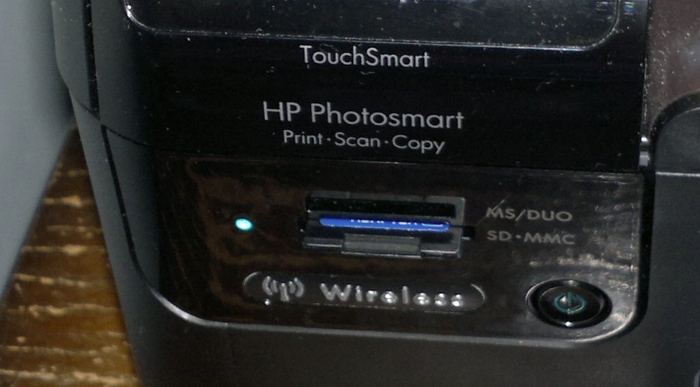
The 16GB microSD card from my N8, in its SD-adapter-host, inserted into our photo printer...
In addition, with the E7, having all your favourite music, photos and videos (plus other documents and resources) on microSD from your previous phone will be no benefit at all - you'll have to manually copy these over to the internal disk, which will be time consuming and prone to human error. For Nokia's 2011 designs, I'm really hoping that the E7 was a one-off in this regard (and here I don't buy the 'we didn't have room' argument) and that all other phones will have proper microSD slots.
Personally, I'd far, far rather have a card slot (into which I can put a 16GB card) than an equivalent internal chip. And, playing the reliability game, flash memory is known to be less than 100% reliable - if a card goes bad, you simply replace it; if an internal chip goes bad then it's off to the Nokia Care Point you go.....
5. Camera glass protection
Finally, a real hobby horse of mine. You may have spotted the fingerprints on the E7's camera glass in the photo at the top of this piece? Devices likes the N73 and N95 (and the legendary N82) pioneered the idea of a mechanical protector for the all important camera glass. Not only did it stop nasty, greasy fingerprints from accumulating and spoiling your snaps, there was the tremendous convenience of being able to open the slider to actually launch the camera application, so you were good to go in a second or two at most.
The N86 (and some siblings) continued this tradition, but the N8 was deemed too thin to be able to stand the extra thickness of a mechanical slider. The excuse was also that the N8 needed to be able to work seamlessly with 'augmented reality' applications, i.e. a camera-activating slider mechanism would just get in the way of usability, but I'm not really convinced.
And we have the C6-01, C7-00 and E7-00 all also with a horribly exposed camera glass, so it's a safe bet that in this new 'thin is in' ethos in the modern age, camera glass protection's not in Nokia's plans in the near future. Which is a shame. At the very least, I'd hope that an N8 successor (N8-01, presumably) might honour its heritage (N93/N82/N86) and bring back protection, so that having to wipe the glass before every important photo is a thing of the past.
Pretty please....
_________________________
Of course, we're all different and Nokia do try and cover all bases with their hardware designs. And it's possible that I'm coming at all this from the ultra-geek-perfectionist angle. But just maybe you agree with the five points above and I'd then urge Nokia's designers to at least take note of our grumblings....
Steve Litchfield, All About Symbian, 30 Dec 2010

